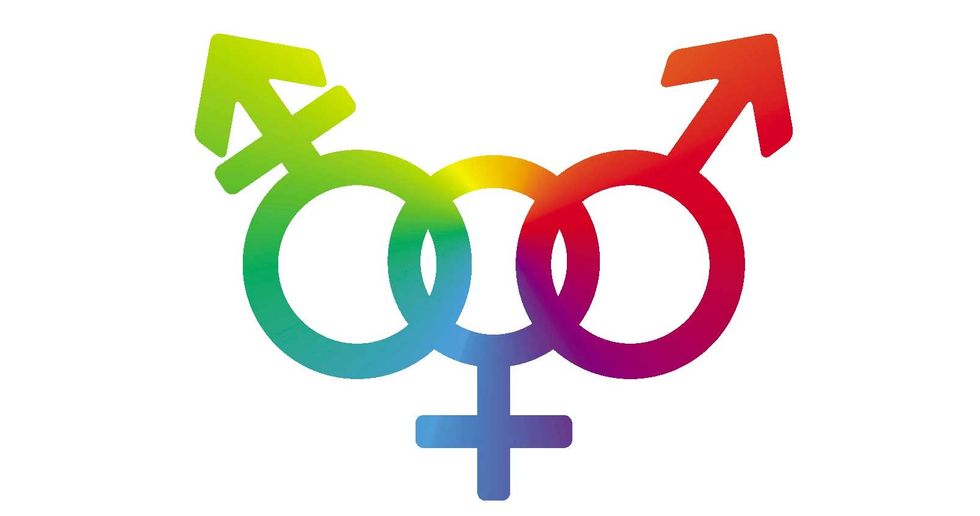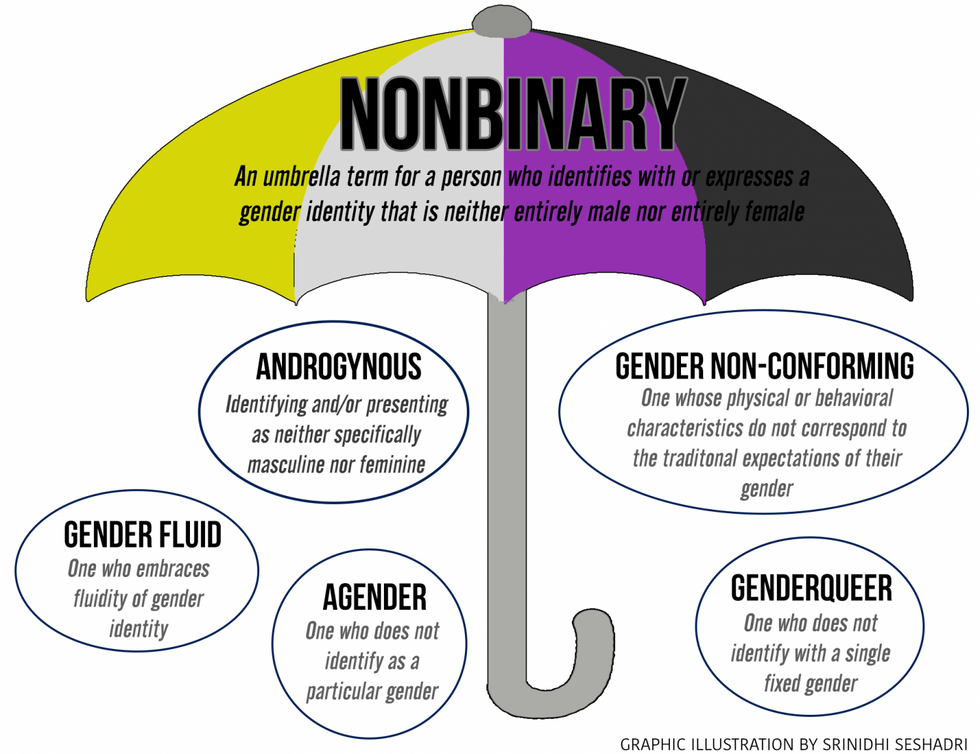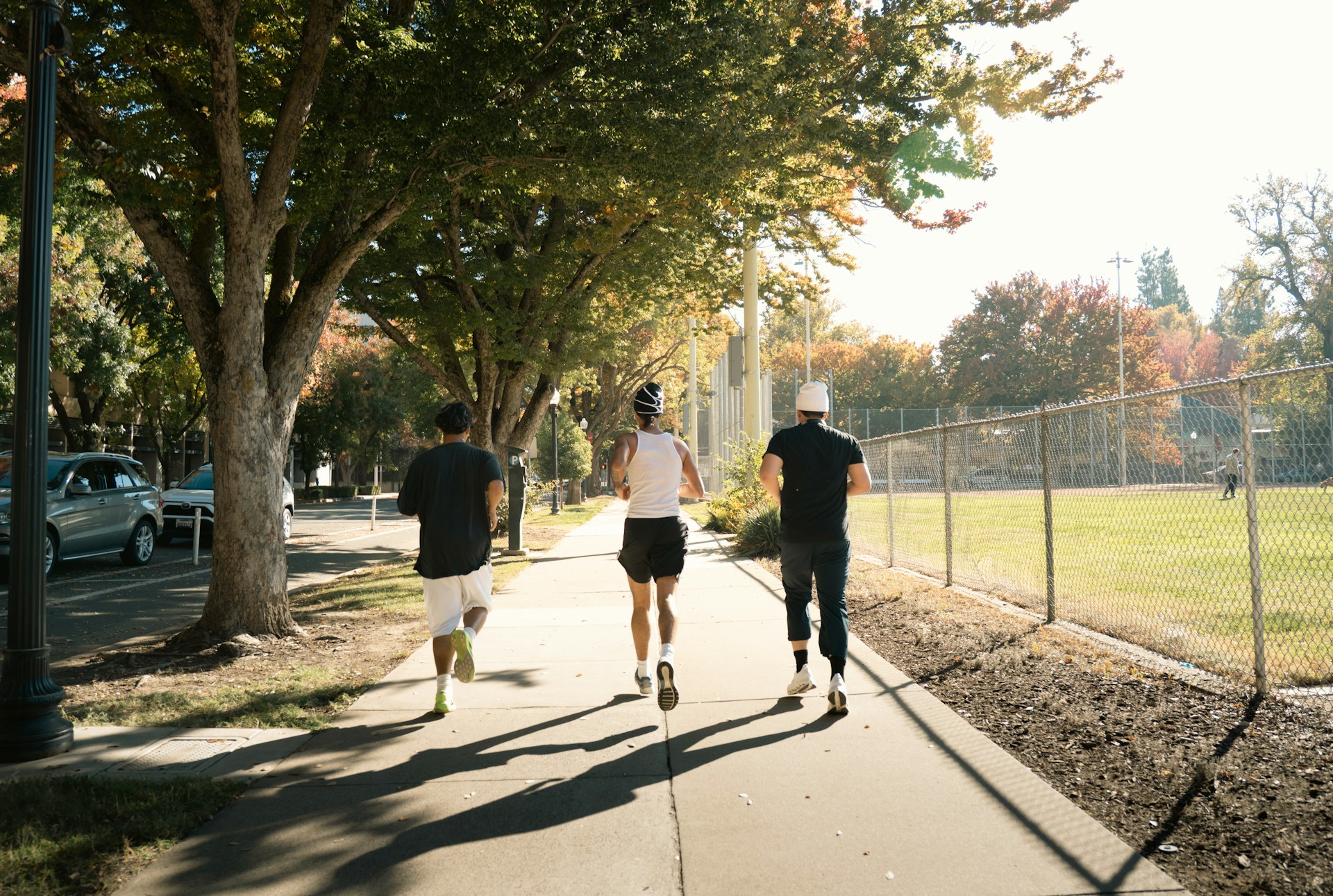Are you in a relationship with somebody who is non-binary?

Here’s what you should do and know to make sure you’re supporting your partner as best you can. Remember, the most important thing is that there are no set rules. How to know if you’re non binary? Communication is vital, and your partner’s needs and values should always come before your preconceived ideas of what gender is or should be.
1. Call them by their pronouns, always

Image via Equally Wed
It’s one thing if you just learned someone’s pronouns and slip up, but this is your partner. You need to call them by their pronouns, and not just in private: in front of your parents, friends, and really, always.
Also, spend some time learning the specifics and nuances of terms in the LGBTQ+ vocabulary. Words like dysphoria, bigender, FtM or MtF, intersex, and passing are all defined in this document from the American Society for Engineering Education, and here’s a HuffPost guide to different pronouns such as Xe and Ze. Even the terms non-binary and genderqueer are similar but distinct, with non-binary being an umbrella term that encompasses trans people, whereas genderqueer refers more specifically to people who identify as queering gender.
While some of these terms might seem unusually specific, they can provide important validation and support for people who may otherwise have felt erased or unseen. Using these words, asking about pronouns, and calling out others for misgendering or using incorrect terminology, is an act of solidarity with your partner (as long as they’re cool with it).
Also, if you make a mistake, don’t get defensive; just apologize and be better next time.
2. Realize that every single person’s experience with their gender is different, and many rules may not apply
Just as every person experiences relationships differently, everyone experiences their gender differently. When you’re dating someone who’s non-binary, throw your preconceived notions about relationships outside the window. There is no one type of non-binary person, there is no set path that anyone should take regarding gender and sexuality, and there are no parameters for how a person should feel or act about their gender and presentation from day to day.
3. It’s not their responsibility to educate you

There’s an extensive amount of available information created by non-binary people for their communities and allies. It’s much more important to read those resources than guides written by allies or partners.
It should not be your partner’s responsibility to educate you about their sexual identity or about simple concepts like the difference between gender and sex. From Gender: Your Guide to the publication them.us, there’s a multitude of resources on queerness and gender available to anyone with an Internet connection. Check out these myths about non-binary folks, this guide from Everyday Gender, or any of the other innumerable resources available on the World Wide Web.
It’s also important to look into the historical context of sexuality as a construct. If you’re dating a person of color, realize that the gender binary is deeply rooted in colonial values and imperialism, and there may be particular ways to make your partner feel comfortable and safe in the relationship.
Ultimately, dissolving and challenging gender binaries and their roots in colonial ideas is liberating for us all, and you’ll find that gender does not exist in a vacuum—like most things, it’s connected to race, class, and pretty much everything else.
4. Avoid heteronormative/binary terms
Dating someone who is non-binary will make you realize just how deeply heteronormative our world is. For example, just the term “boyfriend/girlfriend” reinforces the gender binary and erases gender-queer identities. There are ways to get around these terms, though—from saying “this is my partner” or “this is the person I’m dating,” it’s relatively easy to circumvent binary and gendered language. In general, you can reshape your vocabulary around gender-queer words without too much effort, replacing terms like “ladies and gentlemen” with “everybody” or “sibling” instead of “sister” or “brother.” Words like “girl” and “dude” or “beautiful” and “handsome” can be restrictive, too, even when used casually.
On the other hand, some non-binary and/or trans people might enjoy playing into certain gender roles or terms at different times, and they might prefer certain gendered terms in certain circumstances.
Really, just do the work and don’t make assumptions. Realize that by dating a non-binary person you’re also in a queer relationship, and don’t erase that or any aspect of their identity. As you try to free yourself from sexist constructs that rely on the gender binary, make sure your efforts are reflected in the way you speak and conduct yourself.
5. Recognize your privilege
Just shopping for clothing can be a difficult experience for non-binary people, as clothing is still often sold in an exclusively gendered forms, and bathrooms and regular paperwork can also be tricky in ways you may never have thought of.
Many non-binary people also struggle with dysphoria, which is different from regular body-image issues, and requires its own consideration. Realize that cisgender people have it much easier, as the world was literally designed for and by them, and the least you can do is stay open and keep learning.
6. Support their decision to transition
The world already presents enough barriers to transitions, and so non-binary people definitely don’t need their partners to criticize them or question their decisions about what they want to do with their bodies. Be supportive of their decisions to transition or change how they express themselves, in any shape or form, even if it changes from day to day. Don’t discourage your partner for transitioning or experimenting with ways to feel more comfortable in their own skin. Their experiences are valid, always.
6. Communicate
You don’t have to figure out all your partner’s preferences by yourself—in fact, you shouldn’t make assumptions without asking. You can ask how they’d like to be introduced, if there are circumstances in which they’re not “out,” or if there are gendered activities they’d rather avoid.
The best thing you can do (for any partner, really) is listen. Listen to their experiences, as often nothing can be more helpful than simple validation.
Don’t make their experiences about yourself or your own insecurities. There will be things you can’t relate to, and that’s okay. It’s also not their responsibility to address your concerns about their or anyone’s gender identity.
8. Use extra caution around sex
While every non-binary person’s experience is different and non-binary people can be every kind of sexuality—from asexual to polyamorous—realize that many non-binary people have experienced or are experiencing trauma surrounding their bodies and sexual activities. As with every relationship, you need to check for consent before sex, as well as during, every single time, and this is arguably even more important with non-binary people.
This article from Everyday Feminism lists some questions you should keep in mind if you’re planning on being intimate with a trans or non-binary person. It’s also important to have these conversations if your partner identifies as asexual or if you’re not physically intimate, because your partner might have different comfort levels around PDA or other forms of non-verbal intimacy. Remember that they don’t owe you anything, ever, and they shouldn’t be expected to fit into certain sexual or gender roles, and they definitely cannot be your experiment with sexuality. When in doubt, caution is always best.
Sex and intimacy can be confusing, but when they’re accompanied by clear-cut conversation and explicit, repeated consent, things are always better for everyone, and relationships can be places where real healing and growth can happen.
8. Remember, being non-binary isn’t all they are
Obviously, your partner is a lot more than a non-binary person. They don’t need you to make their gender identity into a bigger deal than it needs to be. You’re dating them because of who they are—because of how they make you feel—and any exterior construct should pale against that.
Although trans and non-binary experiences are often accompanied by a lot of pain, they can also be a source of joy and radical love. In the end, the point is that gender is fake, and gender identity and binaries harm everyone, and love is more real than any arbitrary category designed to restrict our self-expression. Gender fluid people exist, so it’s important to listen and remain unbiased.
to recap: trans men are male. trans women are female. some (not all!) nonbinary/genderfluid people do see themselve… https://t.co/HVxnP0Ca5Y— Sascha Viktor 📌 (@Sascha Viktor 📌) 1565600783.0
some nonbinary people use they pronouns. other n.b people use she or he or both. many n.b people use several pronou… https://t.co/LFwimA0PF9— Sascha Viktor 📌 (@Sascha Viktor 📌) 1565798543.0










